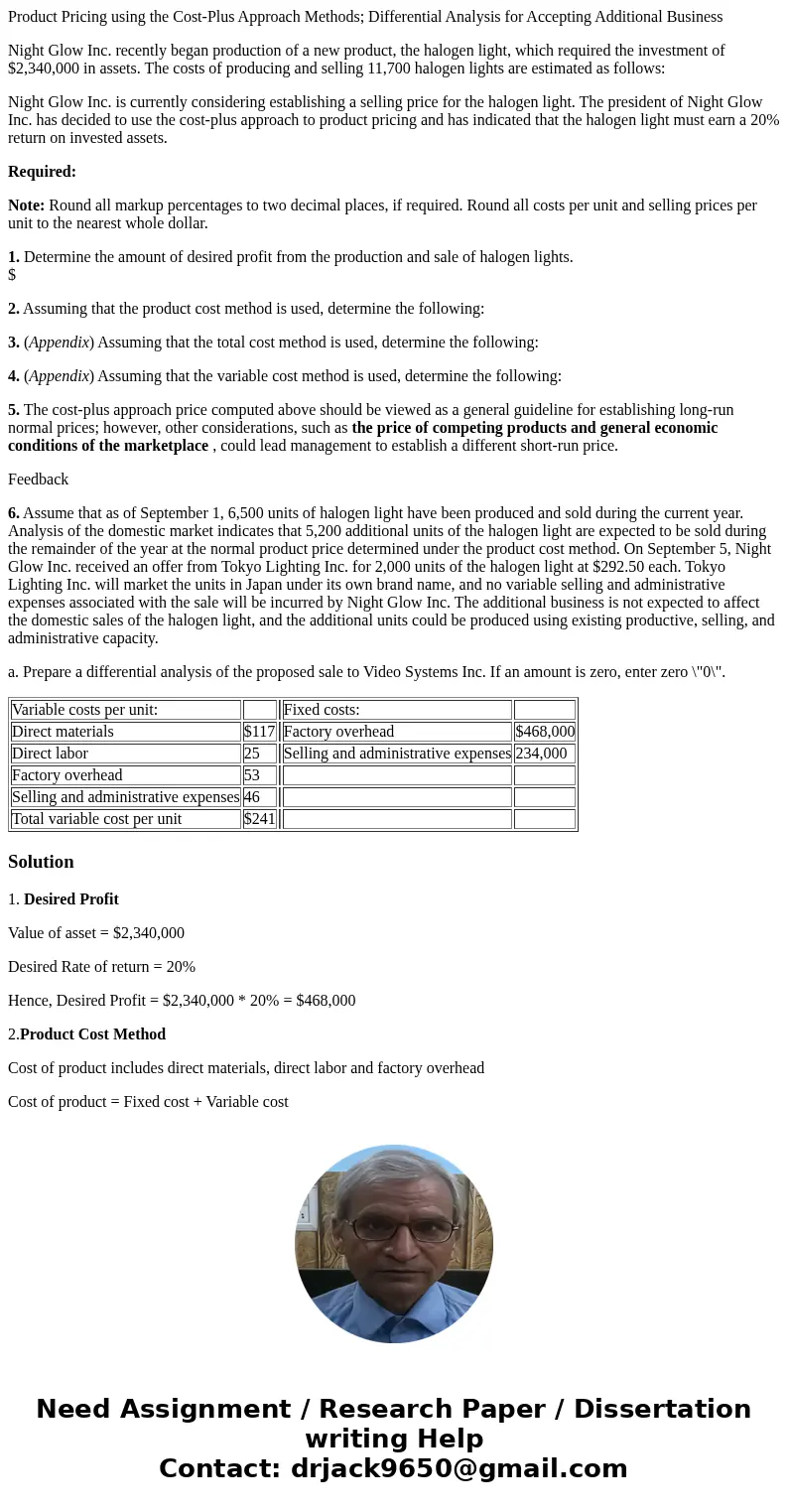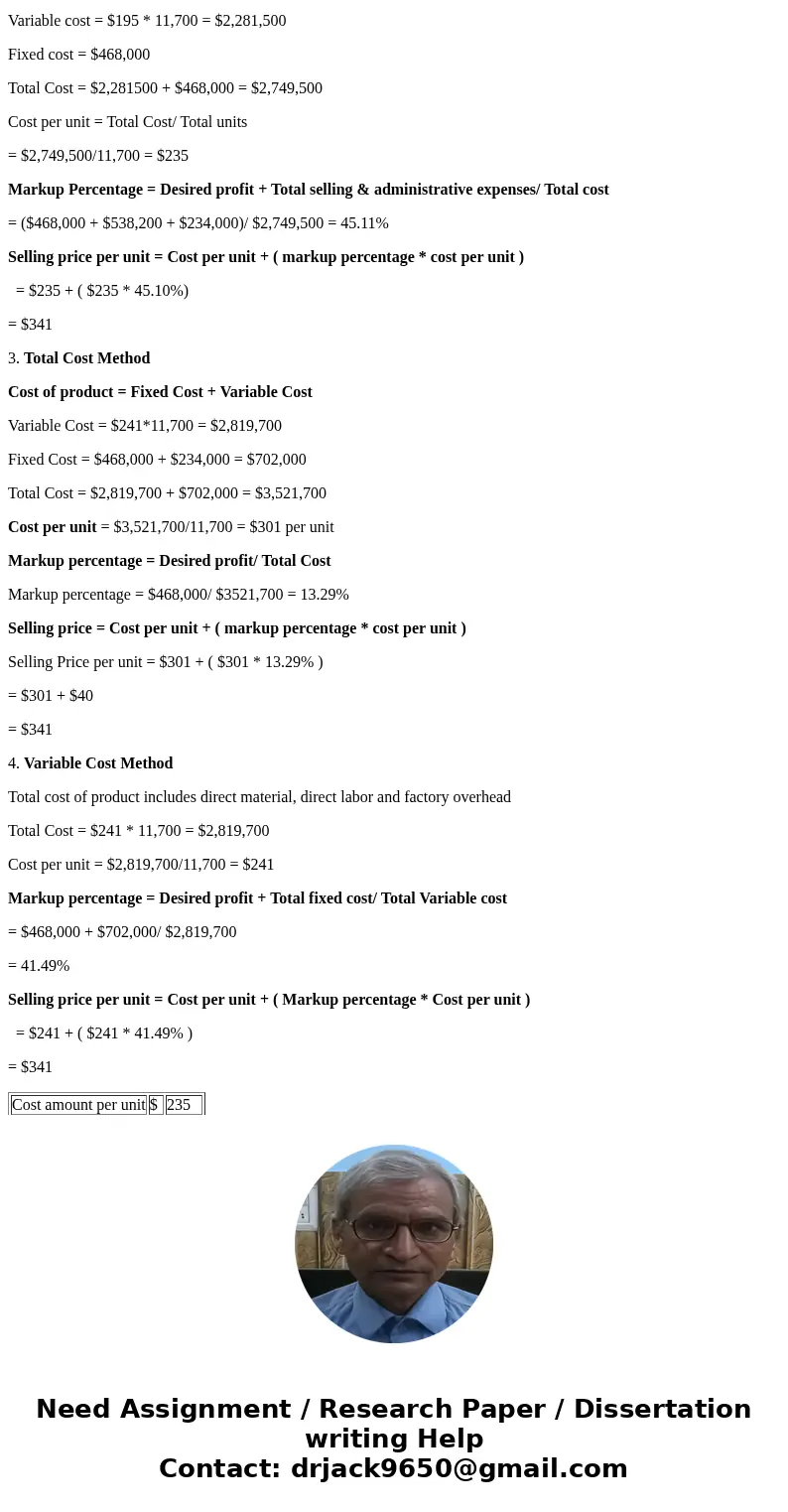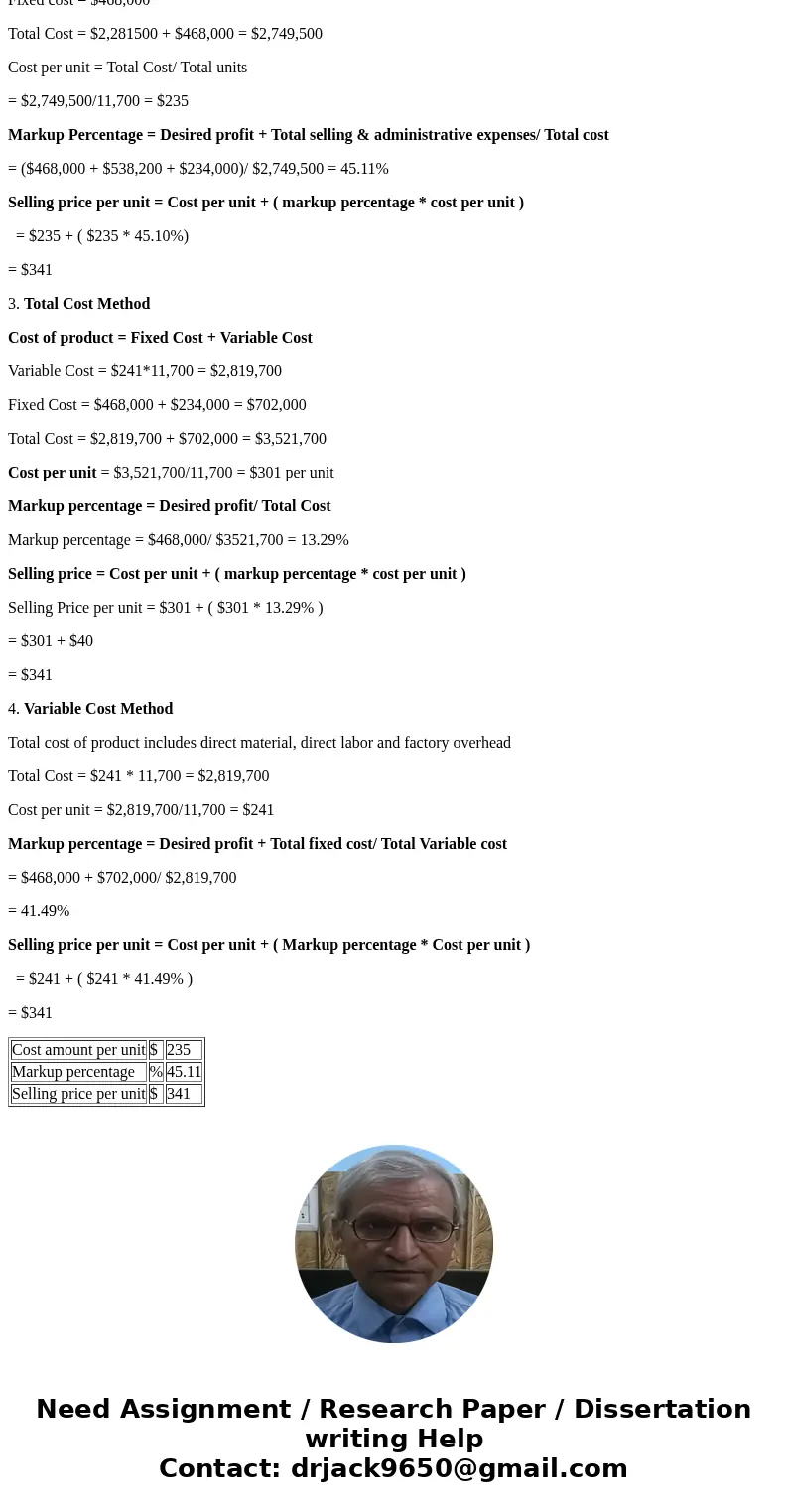Product Pricing using the CostPlus Approach Methods Differen
Product Pricing using the Cost-Plus Approach Methods; Differential Analysis for Accepting Additional Business
Night Glow Inc. recently began production of a new product, the halogen light, which required the investment of $2,340,000 in assets. The costs of producing and selling 11,700 halogen lights are estimated as follows:
Night Glow Inc. is currently considering establishing a selling price for the halogen light. The president of Night Glow Inc. has decided to use the cost-plus approach to product pricing and has indicated that the halogen light must earn a 20% return on invested assets.
Required:
Note: Round all markup percentages to two decimal places, if required. Round all costs per unit and selling prices per unit to the nearest whole dollar.
1. Determine the amount of desired profit from the production and sale of halogen lights.
$
2. Assuming that the product cost method is used, determine the following:
3. (Appendix) Assuming that the total cost method is used, determine the following:
4. (Appendix) Assuming that the variable cost method is used, determine the following:
5. The cost-plus approach price computed above should be viewed as a general guideline for establishing long-run normal prices; however, other considerations, such as the price of competing products and general economic conditions of the marketplace , could lead management to establish a different short-run price.
Feedback
6. Assume that as of September 1, 6,500 units of halogen light have been produced and sold during the current year. Analysis of the domestic market indicates that 5,200 additional units of the halogen light are expected to be sold during the remainder of the year at the normal product price determined under the product cost method. On September 5, Night Glow Inc. received an offer from Tokyo Lighting Inc. for 2,000 units of the halogen light at $292.50 each. Tokyo Lighting Inc. will market the units in Japan under its own brand name, and no variable selling and administrative expenses associated with the sale will be incurred by Night Glow Inc. The additional business is not expected to affect the domestic sales of the halogen light, and the additional units could be produced using existing productive, selling, and administrative capacity.
a. Prepare a differential analysis of the proposed sale to Video Systems Inc. If an amount is zero, enter zero \"0\".
| Variable costs per unit: | Fixed costs: | |||
| Direct materials | $117 | Factory overhead | $468,000 | |
| Direct labor | 25 | Selling and administrative expenses | 234,000 | |
| Factory overhead | 53 | |||
| Selling and administrative expenses | 46 | |||
| Total variable cost per unit | $241 |
Solution
1. Desired Profit
Value of asset = $2,340,000
Desired Rate of return = 20%
Hence, Desired Profit = $2,340,000 * 20% = $468,000
2.Product Cost Method
Cost of product includes direct materials, direct labor and factory overhead
Cost of product = Fixed cost + Variable cost
Variable cost = $195 * 11,700 = $2,281,500
Fixed cost = $468,000
Total Cost = $2,281500 + $468,000 = $2,749,500
Cost per unit = Total Cost/ Total units
= $2,749,500/11,700 = $235
Markup Percentage = Desired profit + Total selling & administrative expenses/ Total cost
= ($468,000 + $538,200 + $234,000)/ $2,749,500 = 45.11%
Selling price per unit = Cost per unit + ( markup percentage * cost per unit )
= $235 + ( $235 * 45.10%)
= $341
3. Total Cost Method
Cost of product = Fixed Cost + Variable Cost
Variable Cost = $241*11,700 = $2,819,700
Fixed Cost = $468,000 + $234,000 = $702,000
Total Cost = $2,819,700 + $702,000 = $3,521,700
Cost per unit = $3,521,700/11,700 = $301 per unit
Markup percentage = Desired profit/ Total Cost
Markup percentage = $468,000/ $3521,700 = 13.29%
Selling price = Cost per unit + ( markup percentage * cost per unit )
Selling Price per unit = $301 + ( $301 * 13.29% )
= $301 + $40
= $341
4. Variable Cost Method
Total cost of product includes direct material, direct labor and factory overhead
Total Cost = $241 * 11,700 = $2,819,700
Cost per unit = $2,819,700/11,700 = $241
Markup percentage = Desired profit + Total fixed cost/ Total Variable cost
= $468,000 + $702,000/ $2,819,700
= 41.49%
Selling price per unit = Cost per unit + ( Markup percentage * Cost per unit )
= $241 + ( $241 * 41.49% )
= $341
| Cost amount per unit | $ | 235 |
| Markup percentage | % | 45.11 |
| Selling price per unit | $ | 341 |



 Homework Sourse
Homework Sourse